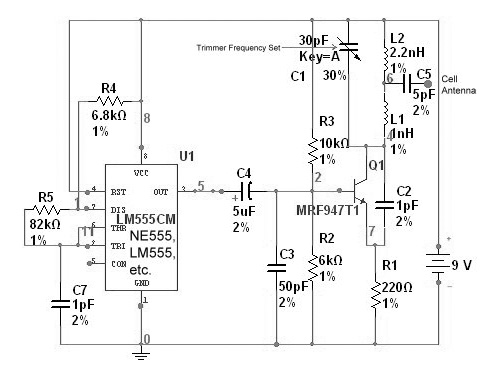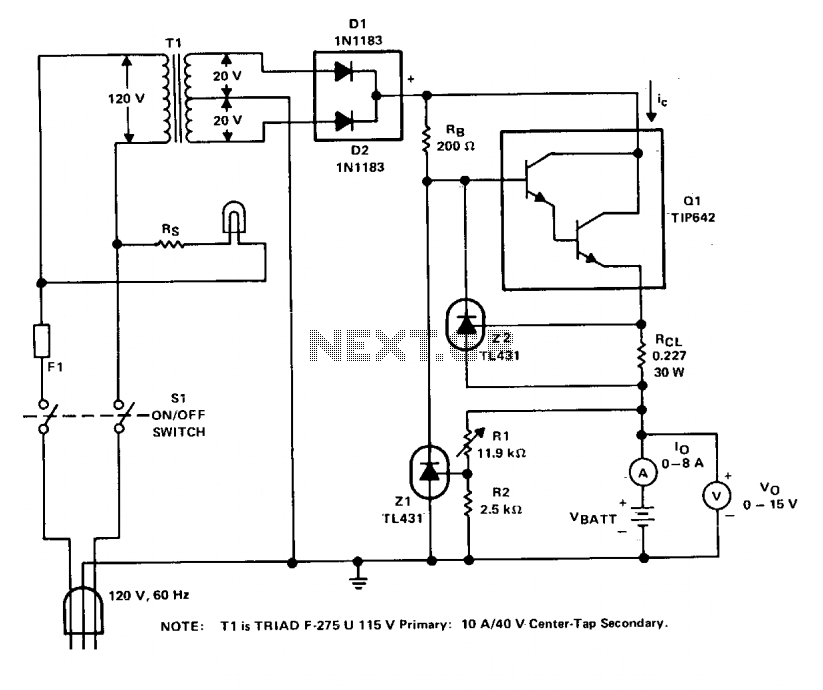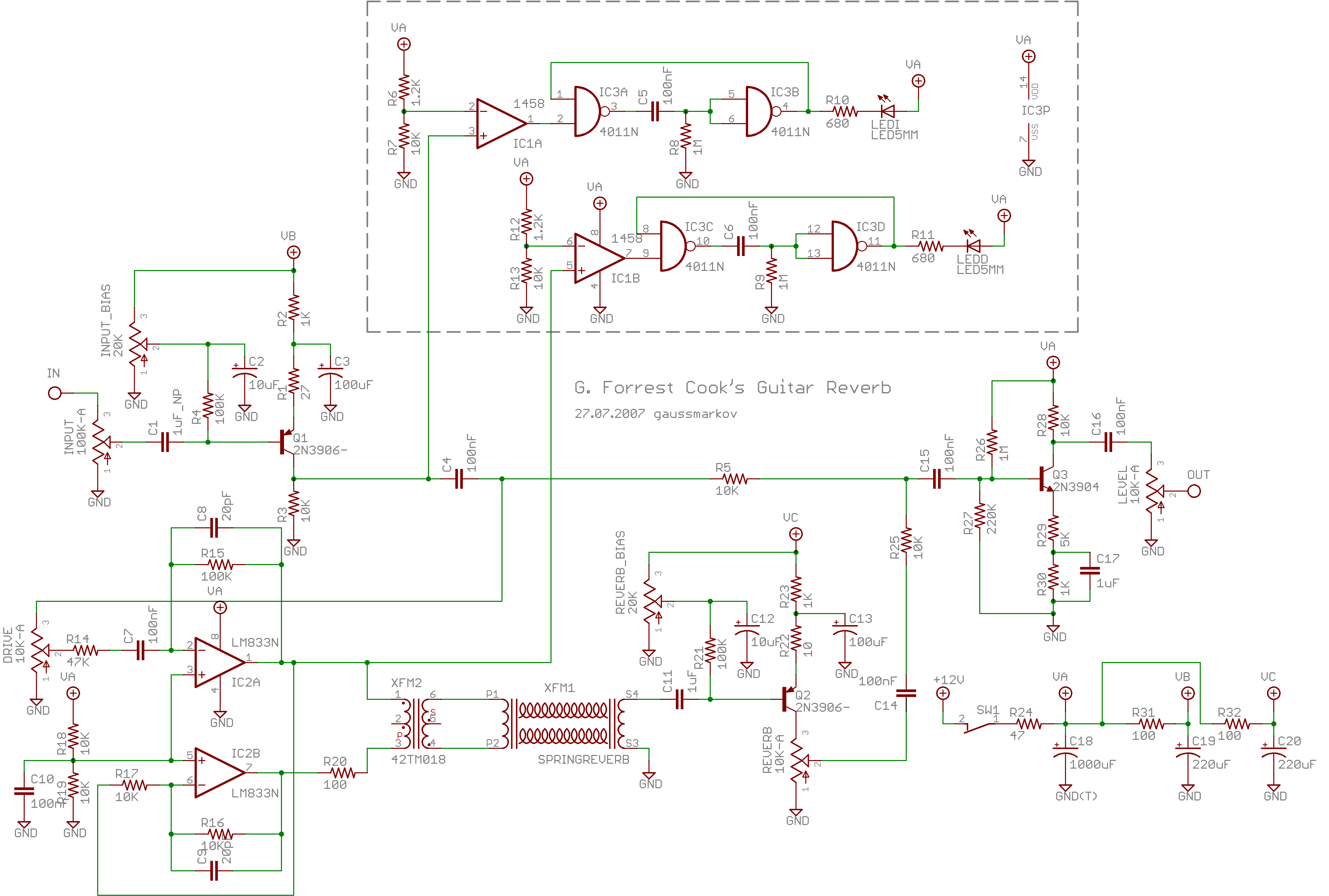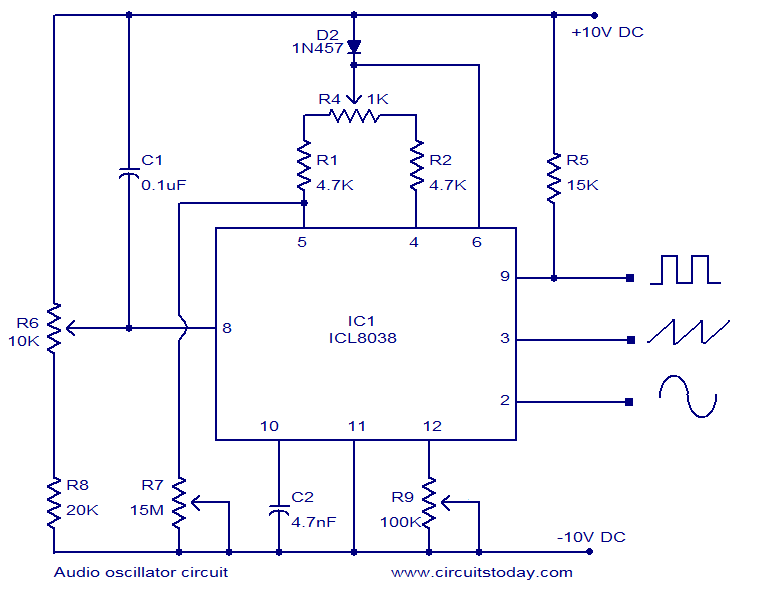
GSM Phone Jammer Circuit Schematics

The circuit is based on the NE555 timer, functioning as a simple noise maker, with its output connected to a single transistor oscillator. This oscillator is designed to operate within a frequency range of 800 MHz to 2 GHz, which corresponds to the frequency range utilized by GSM phones. The operational frequency is adjustable using a trim capacitor.
The circuit is capable of transmitting signals up to a distance of 30 meters. It is recommended to modify the parameters of the circuit and to use a higher power supply for enhanced performance.
The NE555 timer is configured in astable mode, generating a square wave output that drives the base of a transistor, which in turn amplifies the signal. The transistor is chosen based on its frequency response and power handling capabilities to ensure efficient operation within the specified frequency range.
The oscillator's frequency is determined by the values of the resistors and the trim capacitor connected to the NE555. The trim capacitor allows for fine-tuning of the output frequency, enabling precise adjustments to align with the desired GSM frequency bands.
For optimal performance, the circuit should be powered by a stable power supply, preferably one that can provide a voltage higher than the standard operating range of the NE555, to ensure reliable oscillation and signal transmission. Additionally, careful consideration should be given to the layout of the circuit to minimize noise and interference, which can affect the oscillator's performance.
The design allows for a range of applications, including signal generation for communication systems, where the ability to transmit over distances of up to 30 meters can be advantageous. Proper shielding and antenna design may also be implemented to enhance the transmission range and signal clarity.It is based on NE555 as simple noise-maker whose output is fed to a single transistor oscillator. The oscillator is designed to operate between 800MHz and 2GHz which happens to be the frequency span used for GSM phones. The frequency of operation is set with a trim-capacitor. Ovaj bi do 30 metara, a ovaj drugi bi da mu neko javlja na mail. Ne budite lijeni i dokoni vec semu u ruke i konstruisite a ovom prvom preporucujem modifikaciju parametara seme i vece napajanje svakako.
🔗 External reference
The circuit is capable of transmitting signals up to a distance of 30 meters. It is recommended to modify the parameters of the circuit and to use a higher power supply for enhanced performance.
The NE555 timer is configured in astable mode, generating a square wave output that drives the base of a transistor, which in turn amplifies the signal. The transistor is chosen based on its frequency response and power handling capabilities to ensure efficient operation within the specified frequency range.
The oscillator's frequency is determined by the values of the resistors and the trim capacitor connected to the NE555. The trim capacitor allows for fine-tuning of the output frequency, enabling precise adjustments to align with the desired GSM frequency bands.
For optimal performance, the circuit should be powered by a stable power supply, preferably one that can provide a voltage higher than the standard operating range of the NE555, to ensure reliable oscillation and signal transmission. Additionally, careful consideration should be given to the layout of the circuit to minimize noise and interference, which can affect the oscillator's performance.
The design allows for a range of applications, including signal generation for communication systems, where the ability to transmit over distances of up to 30 meters can be advantageous. Proper shielding and antenna design may also be implemented to enhance the transmission range and signal clarity.It is based on NE555 as simple noise-maker whose output is fed to a single transistor oscillator. The oscillator is designed to operate between 800MHz and 2GHz which happens to be the frequency span used for GSM phones. The frequency of operation is set with a trim-capacitor. Ovaj bi do 30 metara, a ovaj drugi bi da mu neko javlja na mail. Ne budite lijeni i dokoni vec semu u ruke i konstruisite a ovom prvom preporucujem modifikaciju parametara seme i vece napajanje svakako.
🔗 External reference





